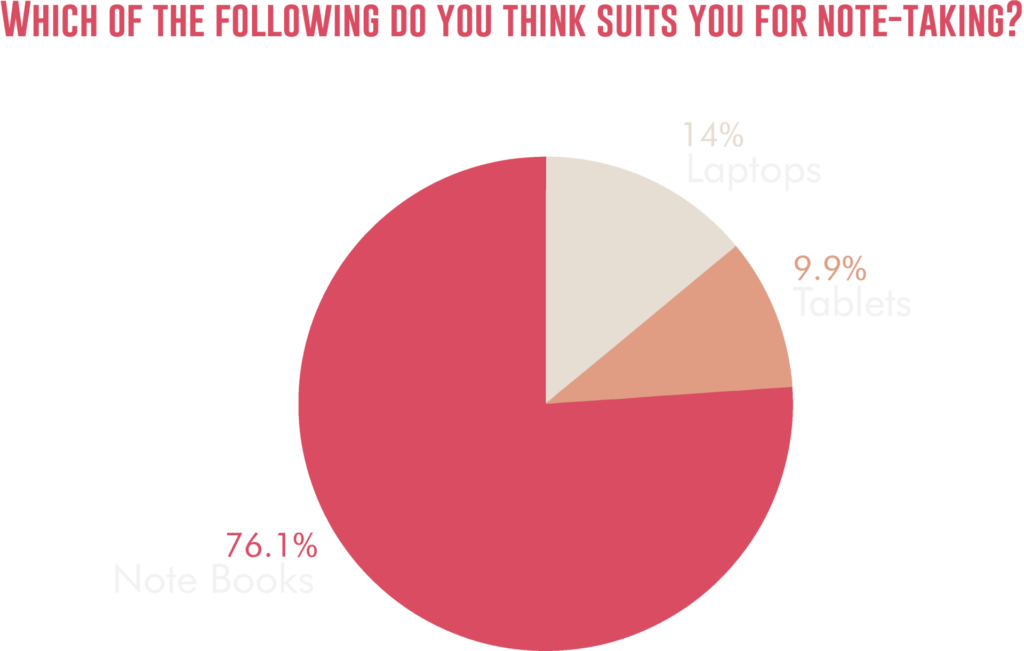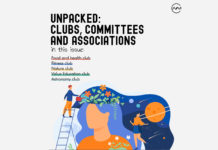“Acquiring the habit of note-taking is a wonderfully complementary skill to that of listening.”
“Compared with writing alone, adding drawings to notes to represent concepts, terms, and relationships has a significant effect on memory and learning.”
(Wammes, Meade, & Fernandes, 2016).
The responsibility of a student in a classroom is to listen and take notes. People learn how to write in nursery and kindergarten, and are expected to carry on with it, and in the Indian education system, one is supposed to just mug up until ‘General Science’ turns into PCM. To be able to improve the current learning methods, let us look into the understated technique of note-taking.
All of us have seen advertisements with pen cameras and how we can use them to record classes. However in reality, the video along with the audio is poor; it is neither feasible nor economical. Nothing beats traditional note-taking by hand.
“Whether it’s taking notes from lectures (Kiewra, 2002) or from reading (Rahmani & Sadeghi, 2011; Chang & Ku, 2014), note-taking has been shown to improve student learning. The quantity of notes is directly related to how much information students retain (Nye, Crooks, Powley, & Tripp, 1984).”
—Jennifer Gonzales
Former middle-school language arts teacher and college-level teacher of teachers.
What amplifies its outcome are the modern ways of note taking. Like all our daily tasks, technology has affected the technique of note-taking in a crucial manner.
With technology influencing every other aspect of our lives, the era of digital note-taking has made jotting notes essentially easier and more fun. One cannot turn a blind eye to the fact that the availability of note-taking softwares allows one to easily organize notes and with the added benefit of cloud storage, never have to worry about losing data.
However, the downside to note-taking is that not everyone can use laptops and ultrabooks with proficiency in typing that is required, and with a lecturer who speaks for a prolonged period; it is difficult to catch on for novices.
Folks do not have to be mindful of these obstacles with the accessibility of touch-sensitive devices such as Tablets, iPads and 2-in-1 PCs. With the introduction of pressure sensitivity and palm rejections, it feels like writing on any other piece of paper. Added features allow one to change the color and type of pen/marker to be used, making it more adaptable. Digital note-taking now allows one to write over PDFs, add images straight from google, add voice notes and even turn handwriting into fonts.
A survey was taken in our college to understand the scenario in NITW. We received a total of 172 responses, with maximum responses from CSE and Civil Department, at 34 and 37 respectively. Out of these, 131 students stated nothing beats the traditional duo of paper and pen for note-taking, while 41 others preferred or wanted to try out the modern methods. 101 opted ‘yes’ when asked if they agreed to the use of laptops in classes, 64 disagreed and others chose, ‘depends’. From the exam point of view, 41 of the surveyed students used a single notebook for all subjects which means, if misplaced, 1 notebook might cost an entire semester or maybe a year. Only 97 students made their own notes and 147/172 were dependent on circulated PDFs.

From the above statistics, it can be seen that though most of the students prefer traditional methods for note taking, they would not be adverse to using laptops in classes.
Students’ Comments
“When compared to writing notes, laptops and tablets may take more work and hence we decrease our concentration on classes. Drawing diagrams is also difficult when compared to writing notes”
“I really love note-taking because it allows me to both understand and retain the concepts taught in class, so when I don’t get time to write down notes because most profs use ‘slides’, I really lose my cool. Taking notes digitally can be a perfect solution to this problem. These profs won’t change their methods, so let us change ours at least.”
“Laptops or tablets can’t replace books.”
Side Effects (Students’ Opinion)
“I think it would be a distraction at first, but if you do that quite often, you’ll get used to it and like it more than conventional writing.”
“You have to remember to keep an electronic device charged, and also there are other limitations that can probably never match the good old fashioned notebooks.”
“It depends on our mindset. If we use it for a good purpose then it is good, else it is bad.”
“No, if we prepare a dedicated app which only allows the option of note-taking, then it would be great.”
A Professor’s Comment
“Use of video and digital systems in biology classes are useful for the students, so that the students can visualize the process happening inside the cell. This is because it’s difficult to observe under a microscope or any real-time situations, unlike other engineering subjects.
Digital note-taking is not a distraction for a student if they concentrate on what they are studying. The content of the syllabus when understood through visual aids will provide better ideation and visualization in their minds; so one can remember it for exams and other research.
Nowadays, I have seen many people take notes on their tablets and laptops directly. Many universities allow their students to use the same during open book exams to use research papers and online books. So, as long as students are using these for their study, it’s useful and they can take notes on the laptop as well. I support that. There is no problem.”
—Dr. Asim Bikas Das, Assistant Professor (Dept. of Biotechnology)
It can be easily concluded that it all depends on how and why the students use portable PCs in their classes. While a fraction may be distracted, the fact that many others are benefitted and get adapted to the modern age cannot be neglected. By removing distractions (eg. turning off WIFI on portable PCs), disturbances can be minimized and using portable PCs in classes can prove to be a valuable learning experience to many students.
– Written by Nayan Jyoti Narzary, NMC reporter.





